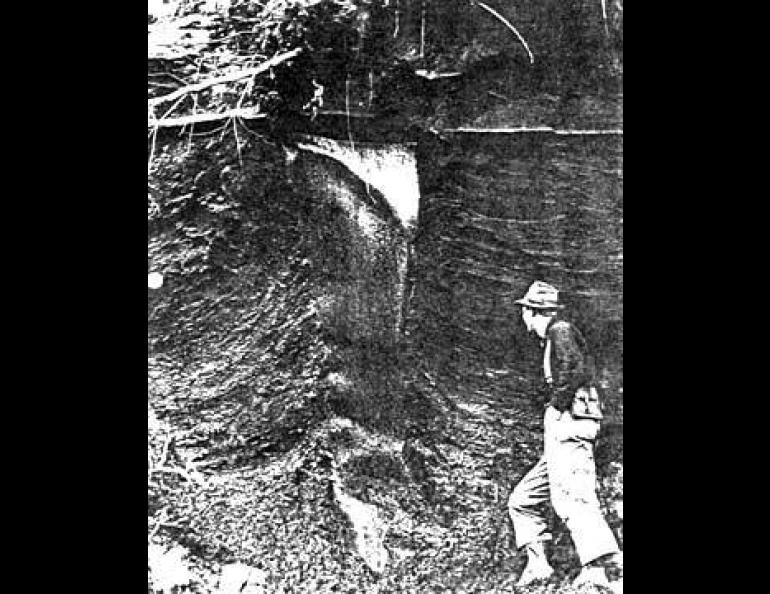
Ice Wedges
Probably the world's most well-known ice wedge (also called ice lens) is the one shown in the accompanying photograph by geologist Troy Pewe. Since Dr. Pewe took this picture near Livengood, Alaska in 1949, it has appeared in many widely-distributed publications. The picture is particularly useful because it clearly illustrates those characteristics of ice wedges that have been used to explain wedge formation.
A vertical ice wedge like the one shown is thought to start out as a crack created by contraction of fine-grained soil masses when the ground temperature falls below about 0°F (-17°C) for a long period. The cracking forms large polygon structures, in shape similar to that seen when mud dries. The cracking is reported to make loud popping noises, so it happens suddenly.
Afterwards, the crack is filled with new ice formed from summer thaw water or water molecules that migrate through the frozen soil and ice to deposit as ice in the crack. Then when the next prolonged cold spell comes along the crack opens again through contraction of the cold ground. This cycle repeats for many years, leading to the highly foliated (sheet-like) structure apparent in the wedge itself. Each growth cycle may increase the thickness of the wedge only by a millimeter or so, more at the top than at the bottom, as would be expected by a cracking opening at the top.
Expansion of the ice wedge each time its new central crack freezes creates more pressure against the nearby frozen soil, causing it to be pushed upward. This upturning of the soil layers shows clearly in the photograph. The flat top of the wedge marks the line of annual freeze and thaw, and hence the top also of the permafrost on either side of the wedge. Though the soil above the wedge probably also undergoes the cracking that could lead to wedge formation, each year's summer thaw would destroy the embryonic development and thereby prevent growth in the soil above the Permafrost.





